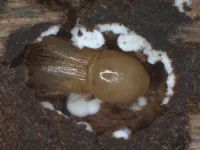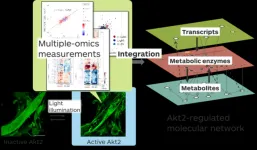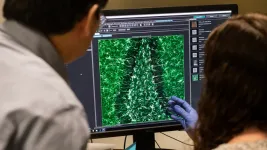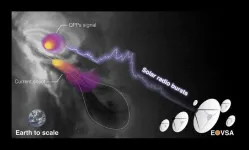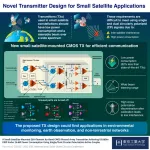Conifer-killing beetles use smell of beneficial fungus to select host trees
Bark beetles use specialized neurons to sense tree-resin derived compounds produced by the fungus
2023-02-21
(Press-News.org) Eurasian spruce bark beetles (Ips typographus) burrow into the bark of Norway spruce (Picea abies) trees where they mate and lay their eggs. Major outbreaks in Europe have decimated millions of hectares of conifer forests. The beetles preferentially attack trees that are already infected with symbiotic fungi (such as Grosmannia penicillata), which is thought to weaken host trees and break down their chemical defenses, allowing the beetles to successfully develop in the bark.
To investigate the chemical signals that the beetles use to identify host trees infected with the fungus, the researchers performed a series of laboratory experiments on captive bark beetles and samples of Norway spruce bark. They found that the fungus breaks down chemicals in tree bark resin, known as monoterpenes, into new compounds, including camphor and thujanol. After 12 days of infection, these fungus-produced compounds dominated the chemical mixture emitted by bark samples. Single cell recordings of sensory neurons in the beetles’ antennae showed that they can detect camphor and thujanol, and in behavioral experiments, bark beetles were attracted to bark containing the fungus-produced compounds.
Tree-resin derived compounds produced by the fungus may allow bark beetles to assess the presence of their symbiont, helping them to identify suitable sites for feeding and breeding. The authors say that understanding the role of these compounds in bark beetle attacks could be useful for pest-management strategies to protect European conifers from epidemic outbreaks.
Gershenzon adds, “The bark beetles currently killing millions of spruce trees every year in Europe are supported in their attacks by fungal associates. We discovered that these fungi convert volatile compounds from spruce resin to products, which may serve as cues for bark beetles to find them.”
#####
In your coverage, please use this URL to provide access to the freely available paper in PLOS Biology: http://journals.plos.org/plosbiology/article?id=10.1371/journal.pbio.3001887
Citation: Kandasamy D, Zaman R, Nakamura Y, Zhao T, Hartmann H, Andersson MN, et al. (2023) Conifer-killing bark beetles locate fungal symbionts by detecting volatile fungal metabolites of host tree resin monoterpenes. PLoS Biol 21(2): e3001887. https://doi.org/10.1371/journal.pbio.3001887
Author Countries: Sweden, Germany, South Africa
Funding: Financial support was provided by the Max Planck society to DK, RZ, YN, HH, AH and JG. MNA acknowledges funding from the Swedish Research Council FORMAS (grants #217-2014-689 and #2018-01444) the Crafoord foundation, the Royal Physiographic Society in Lund, and the Foundation in Memory of Oscar and Lily Lamm. The funders had no role in study design, data collection and analysis, decision to publish and writing.
END
[Attachments] See images for this press release:
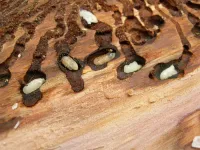
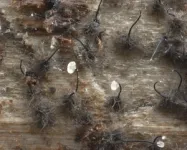
ELSE PRESS RELEASES FROM THIS DATE:
2023-02-21
The mass outbreaks of bark beetles observed in recent years have caused shocking amounts of forest damage throughout Germany. As reported by the Federal Statistical Office in July 2022, more than 80% of the trees that had to be felled in the previous year were damaged by insects. The damaged timber felled due to insect damage amounted to more than 40 million cubic meters. One of the main pests is the European spruce beetle Ips typographus. In the Thuringian Forest and the Harz Mountains, for example, the beetle, which is only a few millimeters long, encountered spruce monocultures that had already been weakened by high temperatures and extended ...
2023-02-21
Takeaki Ozawa and his team from the University of Tokyo reveal the metabolic reactions upon activating an enzyme called Akt2. In doing so, they reveal the inner workings of insulin-regulated metabolism. The findings lead the way for Akt2-targeting therapeutics for diabetes and metabolic disorders.
It takes energy to do anything—even to exist. You can metabolize food to convert glucose into energy: thanks to many cascades of molecular reactions within your cells. As soon as you eat, your pancreas secretes insulin hormone, which starts ...
2023-02-21
SAN FRANCISCO, CA—February 21, 2023—Of all the known genetic risk factors for late-onset Alzheimer’s disease, the strongest is a gene for the protein called ApoE4. People with one copy of this gene are 3.5 times more likely, on average, to develop Alzheimer’s than others, and those with two copies face a 12-fold increased risk. However, exactly how ApoE4 boosts the risk of Alzheimer’s remains unclear.
Multiple types of cells in the brain make ApoE4—some of it is produced by neurons, but other brain cells called glia make it in higher quantities. For that reason, most prior research on this protein has focused on ...
2023-02-21
University Professor Douglas Rhoads has been named a Fellow of the American Association for the Advancement of Science, the world’s largest general scientific society and publisher of the journal Science.
As one of only 20 fellows representing the Section on Agriculture, Food & Renewable Resources, Rhoads was chosen by his peers and colleagues for advancing science and its applications in service to society. The organization elected a total of 505 fellows across 24 scientific sections.
Rhoads is director of the Interdisciplinary ...
2023-02-21
Researchers from Oregon Health & Science University and institutions across the country have identified a pill used to treat a common skin disease as an “incredibly promising” treatment for alcohol use disorder.
The study was recently published in the Journal of Clinical Investigation.
On average, the people who received the medication, called apremilast, reduced their alcohol intake by more than half — from five drinks per day to two.
“I’ve never seen anything like that before,” said co-senior author Angela Ozburn, Ph.D., associate professor of behavioral neuroscience in the OHSU School of Medicine and a research biologist ...
2023-02-21
The University of Ottawa's Dr. Mamta Gautam is the first awardee of the AFMC Wellness Award, a new national honour that recognizes an individual in Canada who has shown dedication to the promotion and advancement of the wellness of physicians, medical students, and others.
“I am truly humbled and honoured. Promoting physician wellbeing is an area that I have been passionate about for over 30 years. To have the AFMC create an award to recognize contributions in this area lends further credibility to the importance of this topic,” ...
2023-02-21
A solar radio burst with a signal pattern, akin to that of a heartbeat, has been pinpointed in the Sun’s atmosphere, according to a new study.
In findings published in the journal Nature Communications, an international team of researchers has reported uncovering the source location of a radio signal coming from within a C-class solar flare more than 5,000 kilometers above the Sun’s surface.
Researchers say the study’s findings could help scientists better understand the physical processes behind the energy release of solar flares — the solar system’s most powerful explosions.
“The ...
2023-02-21
Huntsman Cancer Institute at the University of Utah (The U) is pleased to congratulate three of our newest endowed chairs. A chair appointment recognizes excellence, while providing academic distinction and funding for future research. Alana Welm, PhD, received a five-year extension in her current role as Ralph E. and Willia T. Main Presidential Endowed Chair in Cancer Research, Aik Choon Tan, PhD, was named the Jon and Karen Huntsman Presidential Professor in Cancer Research, and Brad Cairns, PhD, was named ...
2023-02-21
Today, there are many emerging applications for small satellite constellations, ranging from space-borne networks to environmental monitoring. However, small satellites have special needs when it comes to transmitter (TX) technology. For one, they have stringent limitations on power consumption as they draw energy from solar panels and cannot easily dissipate generated heat. Moreover, small satellites need to communicate with fast-moving targets that can be over a thousand kilometers away. Thus, they require efficient and precise beam steering capabilities to direct most of the transmitted power ...
2023-02-21
A database updated in 2022 reported around 4,852 active satellites orbiting the earth. These satellites serve many different purposes in space, from GPS and weather tracking to military reconnaissance and early warning systems. Given the wide array of uses for satellites, especially in low Earth orbit (LEO), researchers are constantly trying to develop better ones. In this regard, small satellites have a lot of potential. They can reduce launch costs and increase the number of satellites in orbit, providing a better network with wider coverage. ...
LAST 30 PRESS RELEASES:
[Press-News.org] Conifer-killing beetles use smell of beneficial fungus to select host trees
Bark beetles use specialized neurons to sense tree-resin derived compounds produced by the fungus


